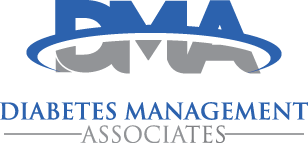Hypoglycemia
with higher blood glucose levels. Untreated hypoglycemia can lead to seizures, unconsciousness or
coma.
WHAT ARE THE SYMPTOMS OF HYPOGLYCEMIA?
Weak or tired, nervous or irritable or anxious, numbness or tingling around the mouth or lips, dizzy or
shaky, hungry, headache, sweating, fast heartbeat, confusion and blurry vision.
WHAT ARE THE CAUSES OF HYPOGLYCEMIA?
Not eating or eating too little food, taking too much insulin or diabetes pills, being more active than usual and stress.
HOW DO I TREAT HYPOGLYCEMIA?
It is very important to ALWAYS be prepared to treat hypoglycemia. If you have symptoms, check blood
glucose level immediately. If low, follow the ‘Rule of 15’.
RULE OF 15 (15 grams of carbohydrate, 15 minutes)
Step 1. Eat or drink a fast acting carbohydrate about 15 Grams:
- 3-4 glucose tablets
- ½ can of regular cola (not Diet) or apple juice
- 1 cup Gatorade or juice
- 1 tablespoon table sugar or honey
- 3-5 hard candies you can chew quickly (Lifesavers)
Step 2. Recheck your blood glucose in 15 minutes
Step 3. If blood sugar still less than 70, treat low again and retest again in 15 minutes.
Step 4. Repeat these steps until blood sugar is above 70
Step 5. You should then eat a snack or meal.
If normally take insulin with meals, take insulin then eat meal since glucose is in normal range.
If the person with low blood sugar cannot swallow, cake icing, honey or pure sugar can be used. Place a small amount inside the cheek and massage. The lining of the cheek will absorb the sugar.
Glucagon can also be used. It is injected into the muscle and signals the liver to release stored sugar that will raise blood sugars. Glucagon often causes vomiting, so when it is used the person should be kept on his/her side.
